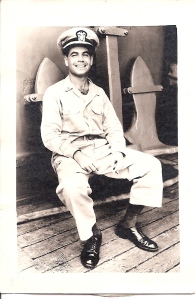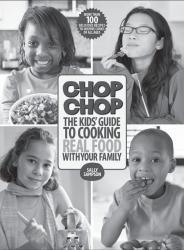Dannielle Owens-Reid and Kristin Russo love to tell the story of how they founded their website, everyoneisgay.com. “The short answer is that it began as a joke,” says Owens-Reid, 29. In 2010, Owens-Reid, an actor and comedian, had started a comic website called Lesbians Who Look Like Justin Bieber. “I was getting a lot of flak about stereotyping lesbians, and I felt that was unfair.” She mentioned her dilemma to an acquaintance, Russo, 33, who also has a theater background but at the time was studying for a master’s in gender studies. In response, the two women decided to launch a website that addressed Owens-Reid’s negative feedback while also fielding advice questions from the larger lesbian, gay, bisexual, transgender, and queer/questioning community. That idea evolved into everyoneisgay.com, their website and organization aimed at helping LGBTQ youth. To support their cause the women tour schools, give advice weekly from their Tumblr account, and offer support to families through a companion site, theparentsproject.com. They estimate that over the past four years they have answered more than 50,000 questions, ranging from what happens when “I fall in love with my best friend” to coming out to religious family members. Owens-Reid and Russo’s most recent project is “This Is a Book for Parents of Gay Kids: A Question & Answer Guide to Everyday Life.’’
Q. What are your coming out stories and how have they influenced your work?
RUSSO: I was home on Thanksgiving break from college in 1998 and was working through feelings I had for a woman from high school. Yet I was unsure about identifying as gay or homosexual. My parents had been asking me since I was 13 if I was gay. When they asked me again at the Thanksgiving table that year, I unexpectedly came out. My parents shaped the moment for me. They told me that they loved me. But my dad worried about discrimination, and I struggled with my mom who was raised a very religious Roman Catholic. She was taught that being gay was a sin, and anyone who acted on those feelings would go to hell. Because she loves me with every bone in her body, she couldn’t accept that I wouldn’t join her in heaven. Luckily, my mother never stopped challenging herself and revisiting those feelings.
OWENS-REID: I’m from South Carolina and was raised in a very proper Southern way. But when a girl kissed me in college, I came out almost immediately after that. My dad has always put my happiness before anything. Nothing fazed him about my sexuality. All he wanted to do was help and that was very comforting. My mother has had a few struggles. It wasn’t an easy road for the two of us. She would say things like, “You’re so pretty. Don’t you want to get married?’’
Q. Can you talk a little about how the coming-out process works its way through families?
RUSSO: “There’s so much benefit in allowing parents to go through their own [coming-out] process. A woman came up to us the other day on our book tour and told us that “you saved my relationship with my daughter. She reads your work and you told her that I need to come out as well.’’ It’s giving permission to everyone involved to assess the moment.
OWENS-REID: One of the most meaningful things that we write in the book is for kids to think about the process of the person they come out to. Your mother or father has to tell family members, the people they work with. It’s also important for parents and kids to understand that the first reaction to a kid coming out will not always be perfect. People have to work through the news and not talking about it is one of the worst things you can do.
Q. Should parents refrain from directly asking their child if he or she is gay?
RUSSO: My mother asked me about my sexuality when I was 13, and the question confused me. I wasn’t aware of my identity yet, and I thought that she was asking me because people perceived me as gay. Also, if a kid is not ready to tell a parent he can panic and say he’s not gay. In addition to tackling the coming-out moment, he feels as if he’s lied to his parents. Even in a particular situation where your child is leaving hints, it’s not the best idea to ask. Instead, make a welcoming environment in which you love and accept all people regardless of their identity.
OWENS-REID: A cool thing you can do as a parent to make it easier for your kid to come out is to ask if she is interested in someone at school. Give your child gender-free triggers.
Q. In the book you condemn the words “choice’’ and “fault’’ when discussing sexual identity. Why do those particular words concern you?
RUSSO: I find conversations troubling when parents say that “homosexuality wasn’t my kid’s choice.’’ It implies that if you could choose you wouldn’t be the person that you are. Sexual identity is not a choice, and I don’t feel that I was born with a particular sexual identity.
OWENS-REID: Fault and choice are terrible words. Nothing in particular makes your kids gay. A television show or a piece of clothing does not influence sexuality. It doesn’t make any sense. When people assign fault or blame they imply that there is something wrong, that there is a negative air about gayness.
Q. Do you think parents of LGBTQ children feel they have more to worry about than those whose children are not?
RUSSO: Parents of gay children may struggle a little more because they don’t have a clear picture of what LGBTQ lives look like. The best thing that parents can do is gather information and figure out what throws their picture of the future into disarray.
OWENS-REID: Parents worry. It’s in the job description, and they would also worry about their heterosexual child finding a good partner. Talk to your children. We have learned so much from the LGBTQ young people we meet. They know things and want to talk about them.
Interview originally published in the November 18, 2014 edition of the Boston Globe









